World expo, officially called International Registered Exhibitions, is where people from all over the world gather to find solutions or innovative technologies for challenges or problems. This happens with a gap of five years, with 192 nations as participants. In simple words, it is an international exhibition of food, culture, technology, sports, architecture, and literally everything. This year, the Dubai Expo has been organized in from 1st October 2021 to 31st March 2022.
Table of Contents
History of Expo
The first World Expo was hosted in London in 1851 and the concept was appreciated there and since then it is happening in 5 years. The BIE-Bureau International des Expositions was created in 1928 to regulate the events. The expo is held for 6 months in host nations. Till 2021, in total 34 world expos have been organised, which gave the world immense new innovations in each theme.
The world expo originated in the time of the industrial period in Britain and was held in London’s Crystal Palace.

Some famous inventions at World Expo
Telephone by Alexander Graham Bell in 1876 at Philadelphia’s Centennial Exposition of Arts
Heinz tomato ketchup in 1876 at Philadelphia’s Centennial Exposition of Arts
Coffee percolator in 1855 in Paris
The Eiffel Tower in 1889 at Exposition Universelle in Paris

Ferris wheel World’s Columbian Exposition in Chicago 1893
X-ray machine 1901 Pan-American Exposition, in Buffalo, New York
Ice cream cones in 1904 St Louis World Fair
Hot dogs in 1904 St Louis World Fair
TV broadcasting 1939 World Fair in New York
Air conditioning 1939 World Fair
Hydrogen-powered car Hanover Expo in 2000
Dubai Expo 2021
Bureau International des Expositions (BIE) on 27 November 2013 selected Dubai as the host to conduct the expo, but unfortunately because of covid-19 it was postponed from 20 October 2020 to 10 April 2021 to 1 October 2021 to 31 March 2022. But the name has the year Dubai 2020 for branding.
The theme for the year 2020 is ” Connecting Minds, Creating the Future”, and the sub themes are, Opportunity, mobility and sustainability, each with its pavilion designed by AGi Architects, Foster and Partners and Grimshaw Architects, respectively.
The site for the Dubai Expo is 438 hectare and is between the cities of Dubai and Abu Dhabi. The site plan is designed by the American firm HOK, is organised around a central plaza, named Al Wasl, with three themes: Opportunity, Mobility and Sustainability.

Pavilions at Dubai Expo 2020
Trending Pavilions at Dubai Expo 2020
Terra – The Sustainability Pavilion
Designed by Grimshaw Architects, Terra aims to create awareness about real life solutions to real-world problems. This pavilion inspires to fight for climate change, reduce carbon footprint and make an environmental impact in architecture and design.
There are 4912 solar panels, 18 energy trees, and a 130 metre wide canopy which generates 4GWh of alternative energy. Also, for water treatment, innovative irrigation techniques, including a grey water recycling system, aim to reduce water use in the landscape by 75 percent.
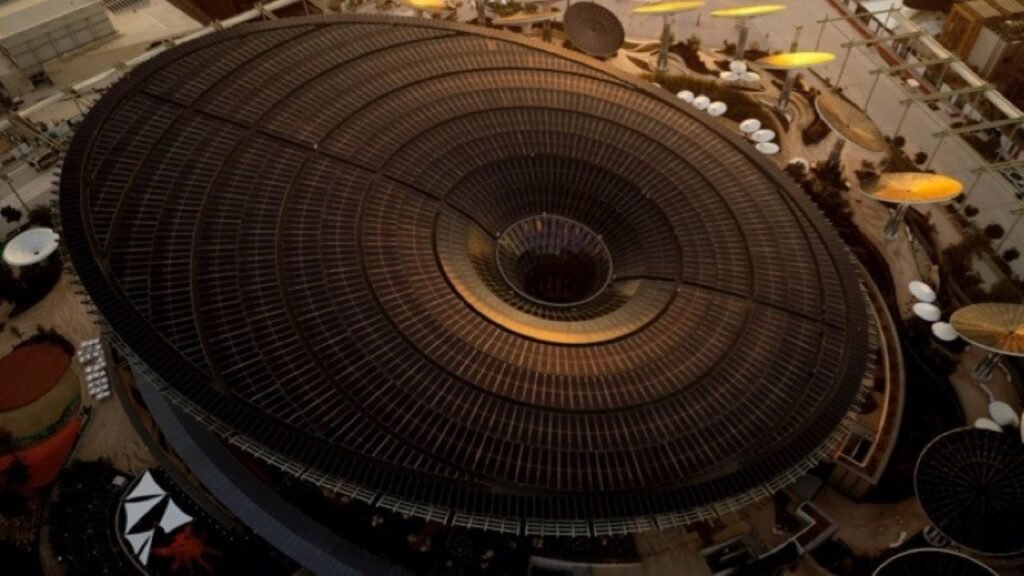
Mission Possible- Opportunity Pavilion
This pavilion architecture and design is done by AGi Architects aims to connect age, language and culture, and celebrate our shared human experiences.
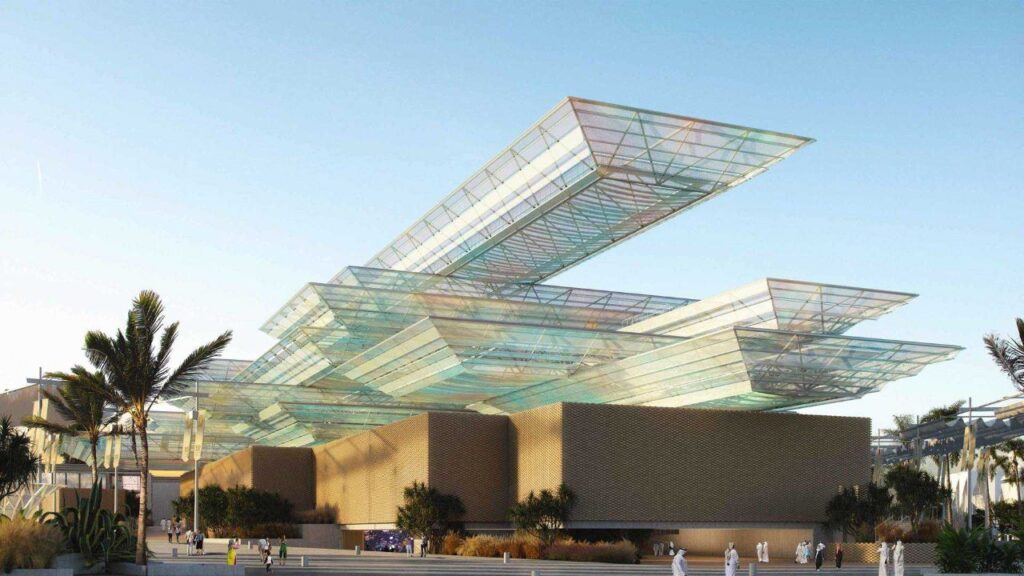
Alif- Mobility Pavilion
Designed by Foster + Partners, features worlds largest passenger lift, which will transport 160 plus people at a single time. The pavilion also stars a partly underground, partly open-air 330-metre track for you to see innovative mobility devices in action.
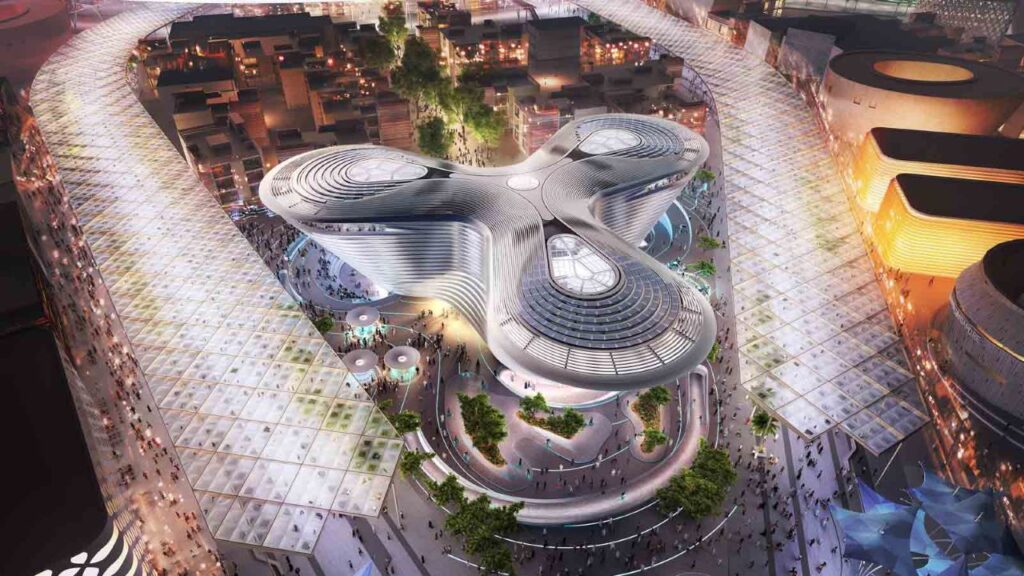
Singapore
Pavilion designed by WOHO architects, with the concept of Themed Nature. Nurture. Future. It is a plant filled pavilion depicting a city of nature through smart and sustainable urban solutions and infrastructure development.
The areas are ground garden, featuring city cone, rainforest cone and flower cone surrounded by canopy walks. And the first floor comprises a sky market.
The focus for the Singapore pavilion is sustainability. It aims to have minimal impact on the environment and architecture industry and thus aims for net- zero energy throughout the event. The energy demands are covered by 517 solar panels on the roof, the groundwater drawn on site is desalinated through reverse osmosis, thus having a closed loop water system.
The food produced in restaurants is processed through eco digester and waste is recycled. This reduces off-site transportation for recycling and saves energy as, through these processes, rooms do not need air-conditioning showcasing infrastructure development.
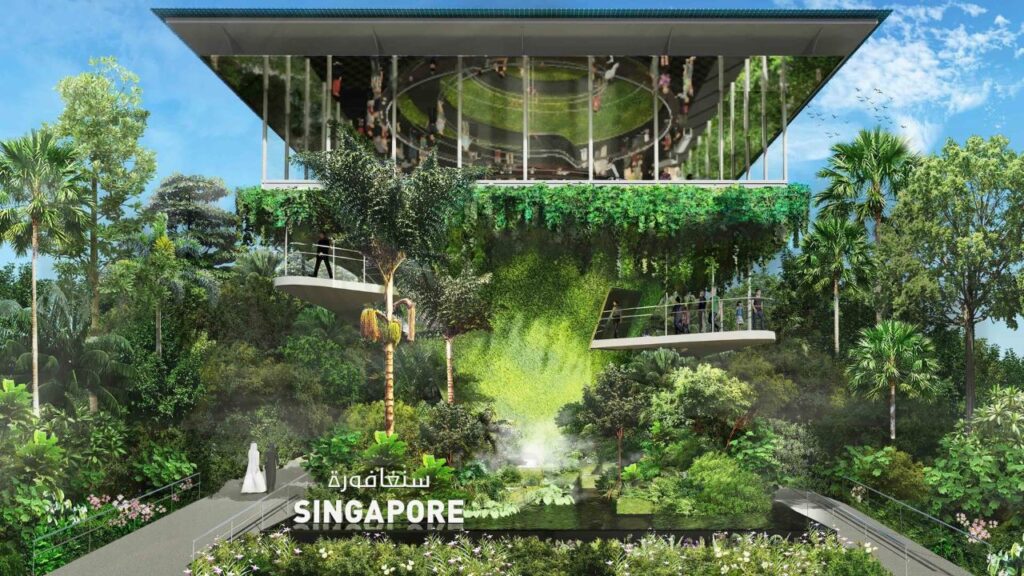
Russia
The theme for the Russian pavilion in Dubai expo is Creative Mind: Driving the Future and comes under mobility. The focus is on the human brain, the most complex phenomenon. The show revolves around the theme- “The mechanics of a miracle” presented by a multimedia show. The author of the idea and design of the main exposition of the Russian pavilion is Simpateka Entertainment Group.
The dome-shaped structure in architecture and design comprises multi-coloured tubes- threads with a combination of bright colours, giving the feeling that there is no beginning or end. This depicts the endless process of brain and nerves, and the unstoppable movement and progress.
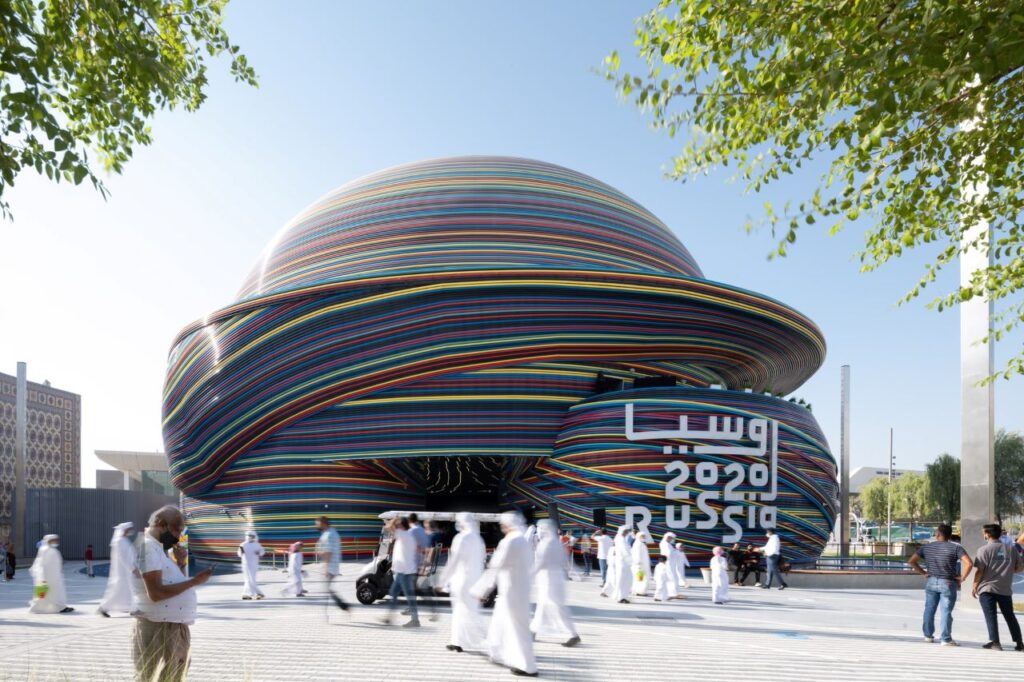
UAE
The pavilion in Dubai expo is in the opportunity district, designed by Santiago Calatrava. The building depicts a falcon bird, which is the national bird of UAE. It is a four- storey pavilion with falcon’s wings made of locally produced carbon fiber, and it can open or shut the wings to shelter roof solar panels.
The entire roof can open in three minutes. The architecture and design concept is of the power, flow of falcon and channelised this for technological innovation to create a balance in architecture design and structural stability.

India Pavilion at Dubai Expo
The India pavilion designed by C P Kukreja, with the concept लोका: समस्ता: सुखिनो भवन्तु (Lokah Samastah Sukhino Bhavantu), which means, “May everyone, in the entire world, be happy.” The theme is Openness. Opportunity. Growth. It is a four- floor pavilion with Ayurveda, Yoga, space programme, culture, entertainment, infrastructure development and future opportunities.
The facade showcases ‘ India on the move’ with its 360 degree rotating panels. There are 600 panels, a mosaic that will present 75 years of history to the expo by kinetic facade.
The India Pavilion in World Expo also hosts an amphitheatre, conference rooms, state pavilions, restaurants, souvenir shops, and much more.

Al Wasl Dome- The Central Pavilion
The central pavilion connects the three thematic districts and acts as a focal point. The plaza is designed by US-based firm Adrian Smith and Gordan Gill Architecture industry. The lattice framework is the 3D of the symbol of Expo 2020 and is made from 13.6 kilometres of steel. The dome is 130m wide and 67.5 metre tall and weighs 2,544 tonnes.
The Al Wasl Dome acts as an urban room and will remain in Dubai after the expo and will host multipurpose, large-scale events. The dome transforms to a 360 degree projection surface with projections depicting the infrastructure development.

After Dubai Expo 2020
After the 6 astonishing months of the Dubai expo, District 2020 will redevelop 80% of the Expo’s infrastructure and surroundings. The Expo will be renamed “Human Centric City of the Future” and will become a city on its own which will accommodate 145,000 people.
Some buildings will remain unchanged like the UAE pavilion or the sustainability district – terra will become a center for child and scientific education. Dubai will promote the soul of the World expo connecting minds, creating the future, and will be a step towards sustainability fulfilling its mission of mobility, opportunity, and sustainability.




